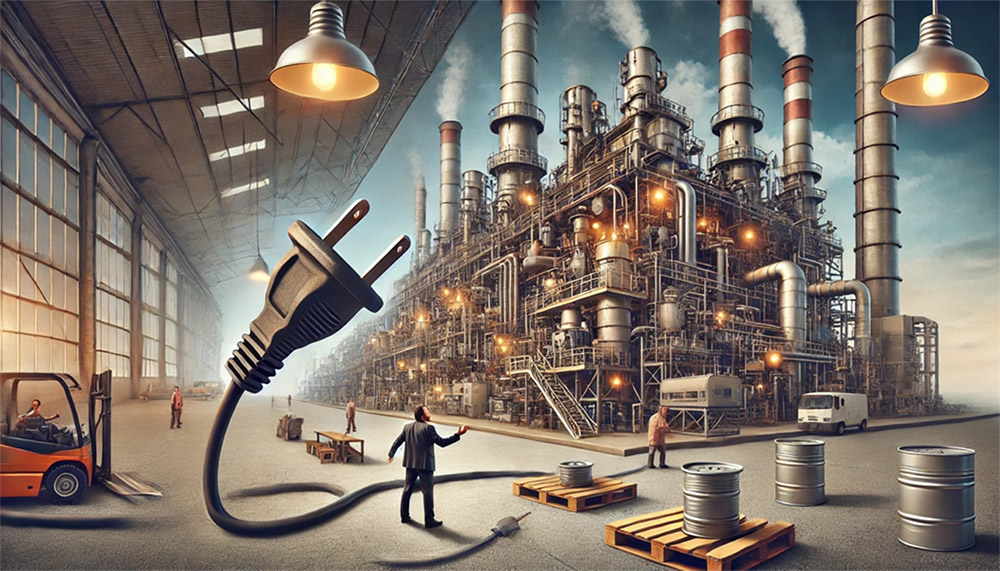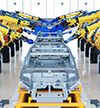Editor's Note: This article is part of Area Development's Auto/Aero Special Report in the Q3 2024 issue. It was commissioned and edited by Dennis Cuneo who served as guest editor for this special coverage.
A key variable in finding a suitable site for an electric vehicle battery plant is the availability of electric power. A battery cell factory may require more than 200 megawatts of electricity, enough to power a small city. As noted in a recent Washington Post article, AI and the boom in clean tech manufacturing are pushing America’s power grid to the brink.The rapid growth of electric demand is complicating the job of economic developers. What was once considered a nearly limitless commodity has become a scarce and valuable resource. According to a recent study from Grid Strategies, power generators and grid operators surprised the industry by forecasting short-term growth almost double the previous estimate from 2.5% to 4.7% within the next five years. A perfect storm is brewing as the United States faces growing energy demand from multiple industries at the same time, while simultaneously hampering the creation and distribution of new electrons to the grid.
The overwhelming majority of this growth is driven by huge investments in data centers for machine learning, AI, manufacturing, and transportation sectors. Through 2028, hyperscale data centers and their co-location counterparts have announced new investments exceeding $150 billion. With these investments, data centers will grow from 2.5% of the US electric demand to 7.5% by 2030. Concurrently, the manufacturing sector, spurred by reshoring, supply chain de-risking, and federal incentives, has announced over $500 billion of new projects since 2021, with energy-intensive semiconductors and battery cell plants making up much of that investment.
The rapid growth of electric demand is complicating the job of economic developers. Meeting the short-term forecasts will be a challenge for the industry. While data centers and manufacturing facilities, such as battery cell plants, require 24 to 30 months to build, new power plants require 48+ months to site, permit, and construct. New transmission lines take even longer, requiring a decade or more to obtain regulatory approvals and acquire rights-of-way. The mismatch in construction times is exacerbated by the phase-out of fossil fuel-fired electric generation.
In the short term, the economic development profession will be impacted in profound ways, adding complexity and uncertainty to their project pipelines.
Increasing Project Budgets and Timelines
Power generators and grid operators, as they invest more capital than originally forecasted, are disrupting the supply chain. Equipment prices and delivery times are spiking. In September 2022, investor-owned electric utilities (IOUs) were planning to invest approximately $482 billion over the next three years. Less than a year later, IOUs revised their forecasts, increasing capital expenditures to $502.9 billion through 2025. The revised forecasts cascaded through the supply chain, with prices for large transformers increasing 60% to 70% since 2020 and lead times ranging from 80 to 210 weeks. With budgets and timelines under pressure, delays and cancellations are increasing.
Even if a project manager can purchase critical electrical equipment, a community must have sufficient trades to install the equipment in a reasonable time. Emerging Bring-Your-Own-Energy (BYOE)
Residential, industrial, and commercial consumers are planning more BYOE projects. In its 2022 Annual Energy Outlook, USEIA predicted that onsite electricity generation will double, reaching approximately 8% of the total US electrical generation by 2050. BYOE, while holding out the promise of uninterrupted power and reducing dependency on an already-overburdened grid, adds complexity to a project and its planning. Companies must evaluate a myriad of additional factors such as energy demand, available fuel choices, energy storage, long-term fuel contracting (and its associated hedges), entitlements, regulatory requirements and permits, and integration with the grid for energy export. BYOE is not for beginners.
Expanding Due Diligence
To mitigate risks, site selectors have expanded their due diligence around energy. Historically, site selection professionals focused their attention primarily on availability and cost. In recent years, site selectors have expanded their RFIs, gathering reams of data relating to reliability, capacity, generation mix, rights-of-way, and availability of equipment and skilled trades. Risk assessments require gigabytes of data.
As an example, production labor is only one component of a labor analysis. Today, site selectors are spending as much time analyzing the availability, cost, and work stoppages associated with skilled trades required to install electrical equipment. According to the U.S. Bureau of Labor Statistics’ National Employment Matrix, construction employment has added 2.1 million jobs over the last decade (a CAGR of 3.2%) compared to 900,000 new manufacturing jobs. And the pressure on future construction employment continues. According to BLS’s Job Openings and Labor Turnover Survey (JOLTS), nearly 450,000 construction jobs were open in December 2023. Even if a project manager can purchase critical electrical equipment, a community must have sufficient trades to install the equipment in a reasonable time.
200 megawatts: The electricity required for a battery cell factory. With the shortage of labor and the superheating of the electric industry, economic developers need to prioritize getting their sites “power ready.” To win projects and keep projects on track, economic developers must coordinate plans with their utility partners that address the following questions with reliable data: 1) how much power is available; 2) what is the timeline for delivering that power; 3) how long will the power be available; 4) how do we prioritize our current sites and allocate our resources given the power and equipment constraints? In the short term, communities that catch up to the pace of industry’s unprecedented investment will thrive in the long term. For a checklist of data points to have ready for an RFI and items to coordinate with community and utility stakeholders, you can download our guide.



